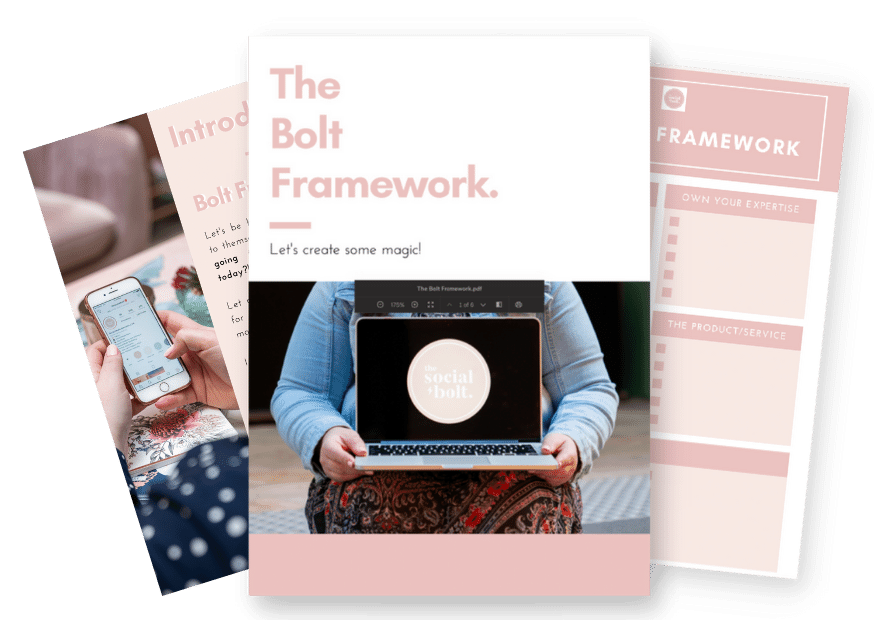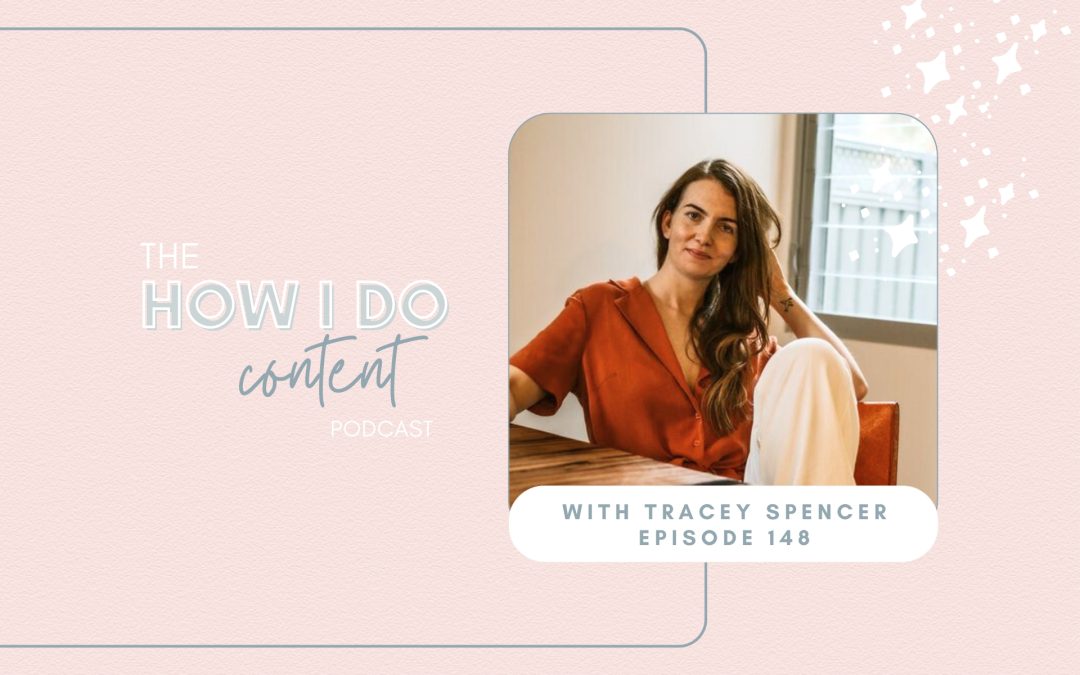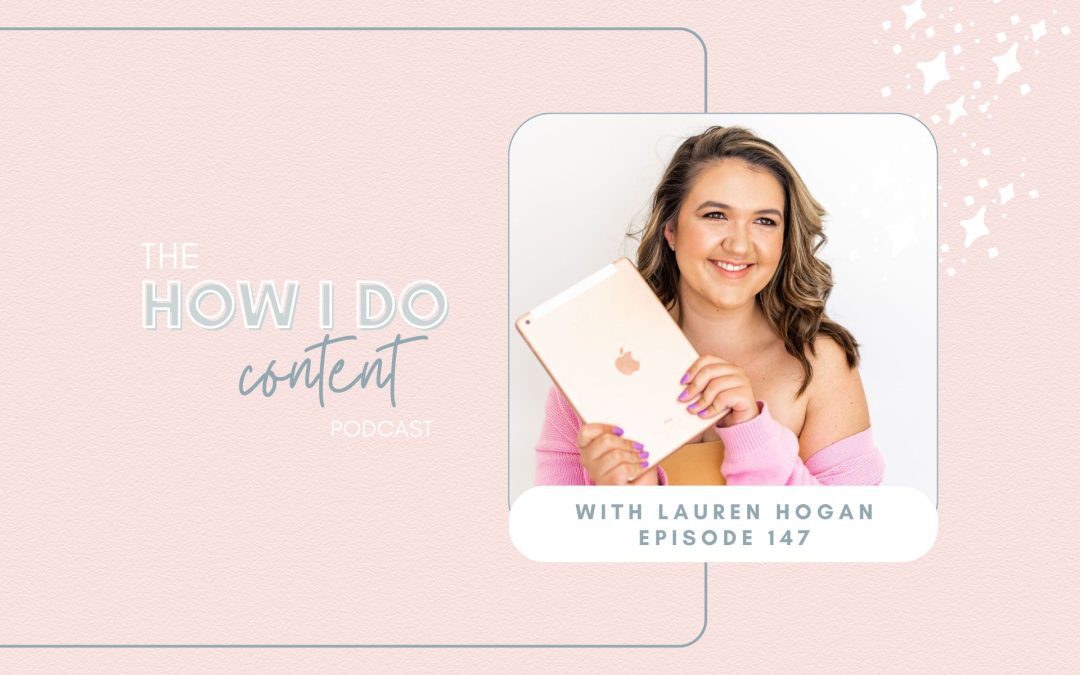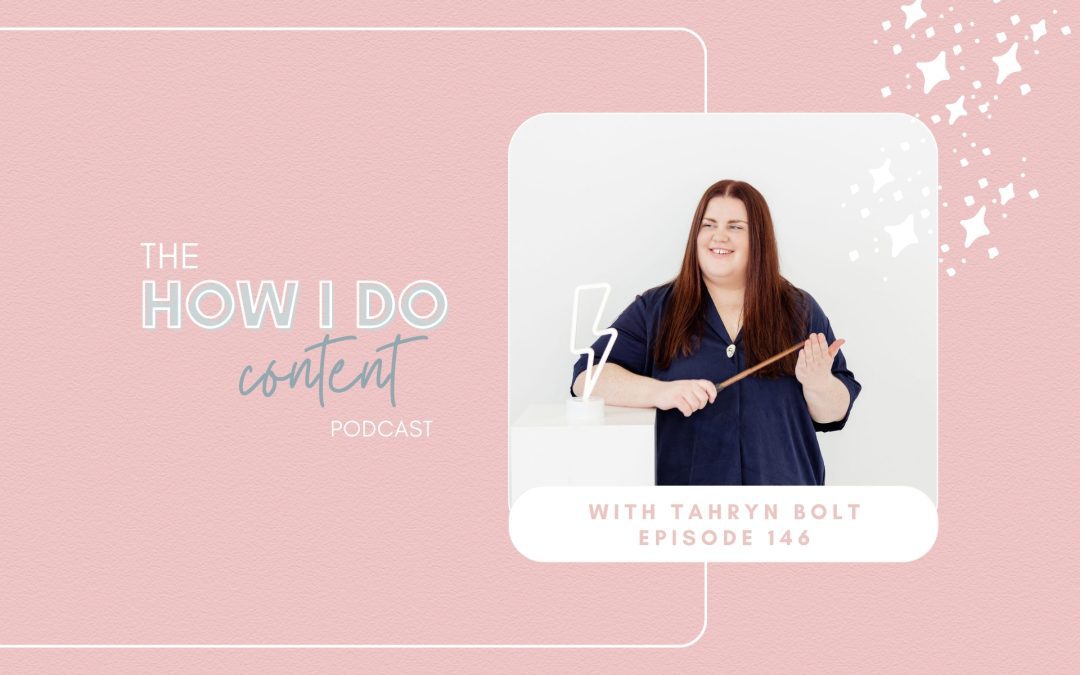The secret to writing persuasive and impactful copy that connects & converts into clients is a magical mix of psychology and words.
And perhaps you’re thinking to yourself – “what does psychology have to do with copywriting, Tahryn?!”
Well, a whole lot more than you think!
Because, as I always say – the most important thing when creating anything in your business is WHO you’re creating it for.
Whether that’s content or offers – you need to deeply understand them (what they’re currently navigating, experiencing and feeling) and what they desire instead if you want to make consistent sales in your business.
And this is something you can’t outsource to ChatGPT.
The successful businesses are those that are deeply connected and tapped into what their community needs and wants, and they deliver on it again and again.
And what better wizard to chat about this with than the magical Anita Siek.
![[PINTEREST] HIDC Pins - New Unlocking the secret of copywriting that connects and converts](https://thesocialbolt.com.au/wp-content/uploads/2023/07/PINTEREST-HIDC-Pins-New.png)
Let me officially introduce you to Anita Siek
Anita is a lawyer turned brand strategist and copywriter, and CEO of Wordfetti, a human-centred brand strategy and copywriting house specialising in helping brands that don’t do normal create a dent in their industry through the power of psychology and words.
There are 3 arms to Wordfetti: the shop, with copywriting templates on demand; the studio, where the Wordfetti team helps execute powerful verbal strategies; and, the school, where they teach you how to do it.
Anita’s work has been featured on Forbes, Boss Babes, Mumbrella, Smart Company, Thrive and more, and some of her clients include Australia’s largest insurance group, IAG, Challenge DV (formerly known as Australia’s CEO Challenge), Lack of Color, The Calile Hotel Group, and Luna Bronze.
I KNOW you’re going to love this conversation and Anita!
So let’s begin.
Things You’ll Learn in This Episode of How I Do Content
- Why consumer psychology is an essential ingredient in your copywriting
- How you can use consumer psychology to uplevel your copy and content game
- Anita’s thoughts on two hot topics – ChatGPT and the impact of the current economic climate on purchase decisions
TL;DL version:
Writing and copywriting aren’t the same thing
You can technically start and grow a business without a logo but you cannot start and grow a business without words…
So many business owners base their writing experience on what they were taught in school or university. Where things like grammar, word count and referencing were super-duper important.
The biggest distinction between school writing and copywriting for a business comes down to one thing: the objective.
The objective for tertiary writing is usually analysis or description based. The objective of business copywriting is to grab attention and drive action. Copywriting doesn’t need to have a minimum word count up in the thousands and, in fact, fewer words can actually be more powerful.
Writing copy that converts means getting to know your audience and understanding:
- What will be attention-grabbing enough to stop their scroll
- What they will take action on
- The value of what it is you’re selling
And the only way to understand these things is to know your audience’s desires, pain points and what they *actually* want. And this is where psychology enters the chat.
Understanding the psychology behind effective copy
Good copywriting is about shifting the lens from trying to make your product or service sound awesome, to conversing with your audience. What do they want to feel? What do they want to see? What do they need to believe in order to buy what you’re selling?
When you understand what makes your potential customers tick, you create opportunities to connect with them. And something we know about sales is that connection is what leads to conversion. For example, a copywriter isn’t simply selling words. They’re selling things like more conversions and the ability to articulate who you are, what you do and your point of difference to other businesses out there.
Don’t throw a good offer in the bin because no one bought it
If you don’t make sales it’s easy to jump to the conclusion that your offer sucks and to throw it in the bin. But, the reasons a customer chooses not to buy from us give us valuable clues to tweak and refine our offer instead of starting again from scratch. Understanding why someone didn’t end up buying is just as powerful as understanding what leads your audience to buy. Surveying your non-buying clients is a great way to gather data that will help you create copy to combat objections in the future. Sometimes it can also be a simple fix like the timing of your launch or offering an extended payment plan – nothing worth binning a good offer over!
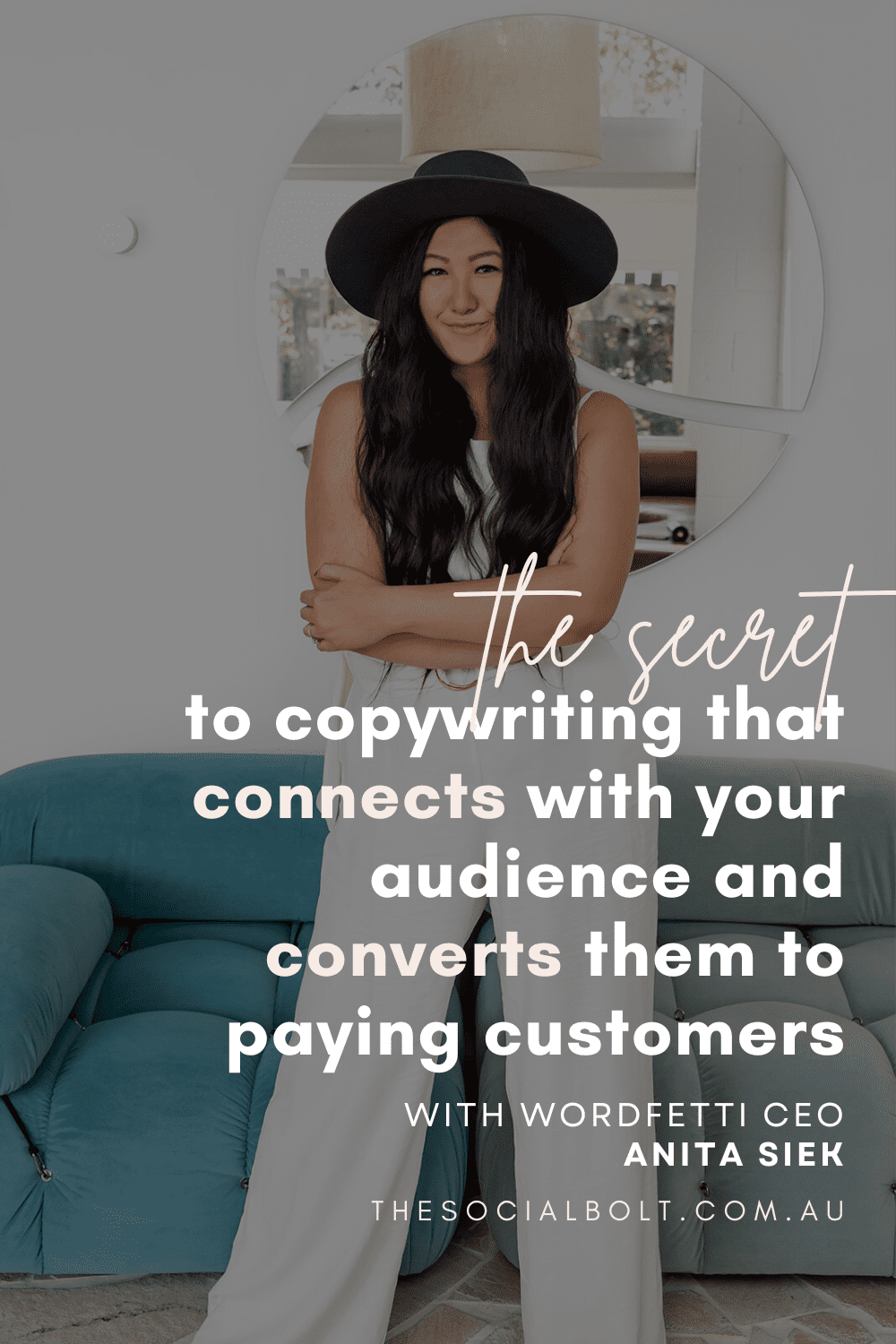
Three tips for crafting stellar copy that converts
1. Listen to the conversations your audience is already having about their pain points.
When it comes to marketing and sales – the conversation around your customers’ pain points and your potential solution is already happening. If we listen to these conversations and continue them in our copy – it will elicit attention-grabbing results.
For example, the business owner is feeling frustrated trying to write emails and sits at their computer stuck in a cycle of typing/backspace/typing/backspace.
2. Be obsessed with the problem you’re solving for your clients, not just the product you’re selling.
No matter what your niche, as a business owner you’re in the business of problem solving. If you’re listening to what your audience actually needs and wants, you’re always going to be able to solve problems for where they’re at.
3. When it comes to market research, survey your ideal customer – not family and friends.
As well-intentioned as your friends and family are, if they aren’t people who you would consider part of your target market, their feedback isn’t going to help you.
The difference between your brand copywriting, content and messaging.
Messaging is the foundation of your content strategy
Think of your brand’s messaging as the part of the iceberg that sits under the surface, unseen. Your messaging is the WHY of your product or service. The strength of your brand messaging lies in your ability to clearly answer these questions for your potential clients:
- Why this?
- Why now?
- Why you?
Note: These are never set in stone – even if you’re selling the same offer. Changing the date of your launch could mean your ‘why now’ answer will be completely different vs. launching at a different time in the year.
Copywriting drives action
Your copywriting is the HOW. It’s the way you communicate the answer to the 3 Why’s from your brand messaging. It speaks to the problems of your audience and encourages them to take action.
Content gets your brand noticed
Copy and content are both word-based but the distinction lies in their goals.
Where the goal of copy is to drive action, the goal of content is visibility. Good content will grab your audience’s attention and take them elsewhere, like to a sales page – where your copy then speaks to them.
2 reasons your website isn’t converting
1. You’re attracting the wrong audience
Does your offer align with the kinds of content you’re putting out there? For example, if an interior designer is seeking more done-for-you clients, but their content centres around DIY solutions.
2. Poor usability and content overload
“If you confuse, you lose.”
You want to clearly communicate how you can help your ideal customer and make it easy for them to take action on your website. Multiple call-to-actions, pop-ups or opt-ins on your site will overwhelm and confuse your customers. Ensure your copy is properly formatted. Use headings to break up big text blocks and make it easier for your audience to consume.
The future of copywriting with AI
You don’t have to be worried about the rise of AI like Chat GPT when it comes to your brand copy. It can be an effective and powerful copywriting tool but it will only create more of what you input. Just like Canva to a designer, so is Chat GPT to the writer. If you don’t know how to communicate your point of difference or the problem you solve – Chat GPT ain’t going to magically make things happen. It requires guidance and input from the user.
Robots and AI will never be able to replace our constantly-evolving human-ness. Things like thoughts, beliefs and trends are always transforming and evolving in society. Chat GPT has no way of being ahead of this curve and relies on what we input.
How to sell in an economic downturn
Economics 101: downturns will happen. Interest rate rises and a wobbly economy is something that has historically happened before, many times. But it doesn’t mean our clients are no longer spending. It means they are being more careful and perhaps not spending in the same areas but they’re still spending! This is where your messaging comes in – Why now?
If you can answer why your audience should still prioritise what it is that you have to offer, that is what will help your audience justify their decision to invest in you.
How to manage (copy)writer’s block
Focus on your objective.
Most of the time a creative block arises because you don’t have a clear goal or structure to what you’re writing. It’s like writing about Chat GPT vs. writing about how you can use Chat GPT for your social media content. Getting really clear on what your focus is for the copy you’re writing will help you rein it in and make progress.
Make space
If you’re trying to force creativity from a place of feeling tired or overwhelmed, it ain’t gonna happen. Go for a walk, take a break, have a nap or change your environment to help reset your creative flow.
Don’t edit while you write
A writer and editor have very different roles. If you’re trying to write copy and editing as you go, you’ll end up in constant conflict with yourself and the whole thing will get nowhere fast. Take the pressure off and just write it down, or create an unstructured brain dump first. Then come back later to edit and get more strategic.
![[PINTEREST] HIDC Pins - New (1) Unlocking the secret of copywriting that connects and converts](https://thesocialbolt.com.au/wp-content/uploads/2023/07/PINTEREST-HIDC-Pins-New-1.png)
Connect with Anita Siek
- Follow Anita on Instagram at https://www.instagram.com/anitasiek/
- Download 5 e-lessons to cannonball your copy game at https://anitasiek.com/freebie
- Listen to the Brandfetti podcast at https://plinkhq.com/i/1464154049?to=page
- Find out more at https://wordfettigroup.com/
Want More?
⚡️ Instagram: @thesocialbolt
⚡️ Take the quiz! Discover Your Unique Blend of Content Magic here
⚡️ Get my DIY Content Wizard Bundle to help you with strategic content creation for your heart led business here

![[WEBSITE] Blog Cover Images 5 ways to make 2023 easier (and generate more cash)](https://thesocialbolt.com.au/wp-content/uploads/2023/07/WEBSITE-Blog-Cover-Images.png)


